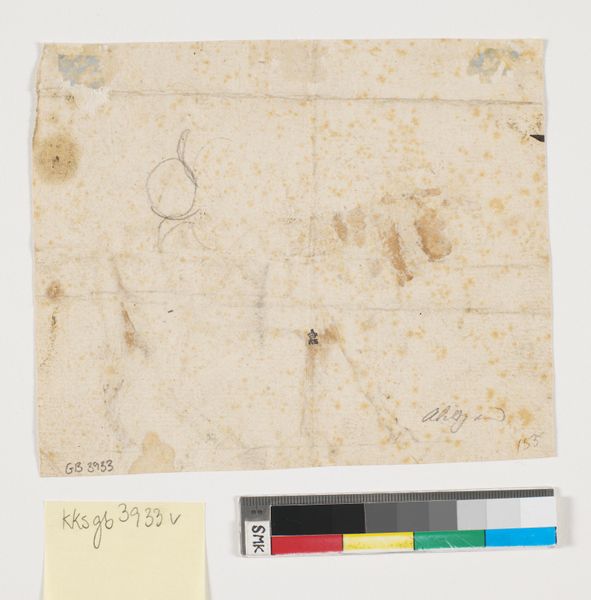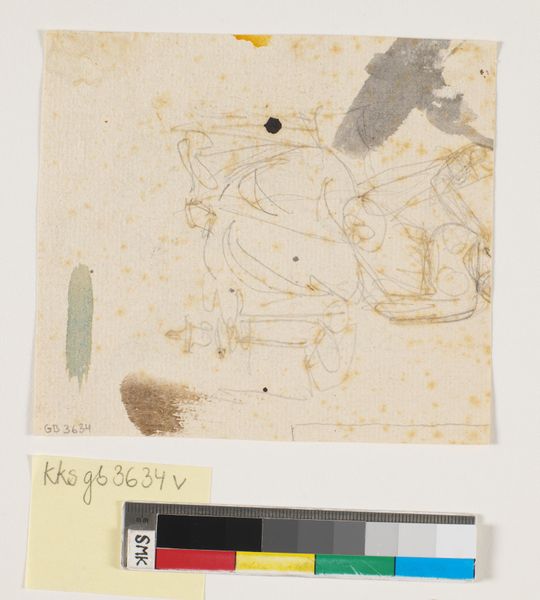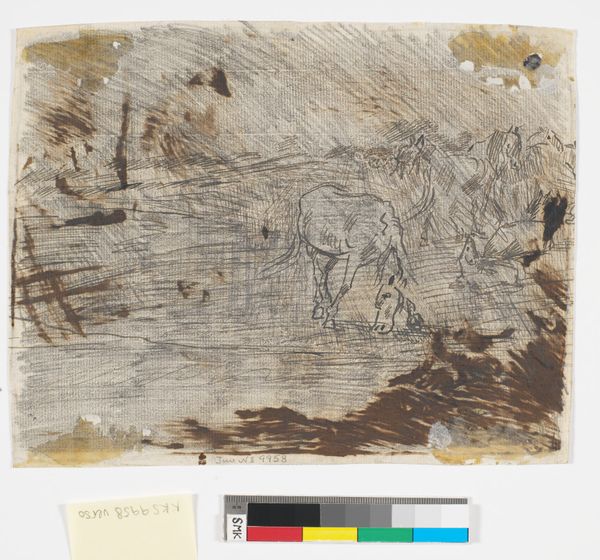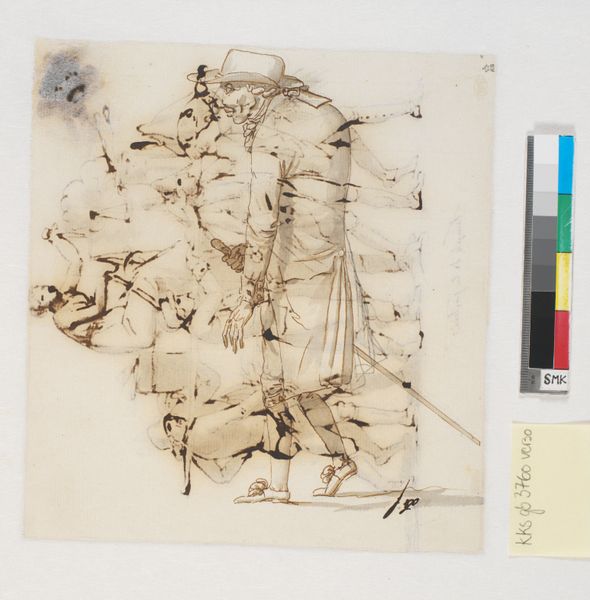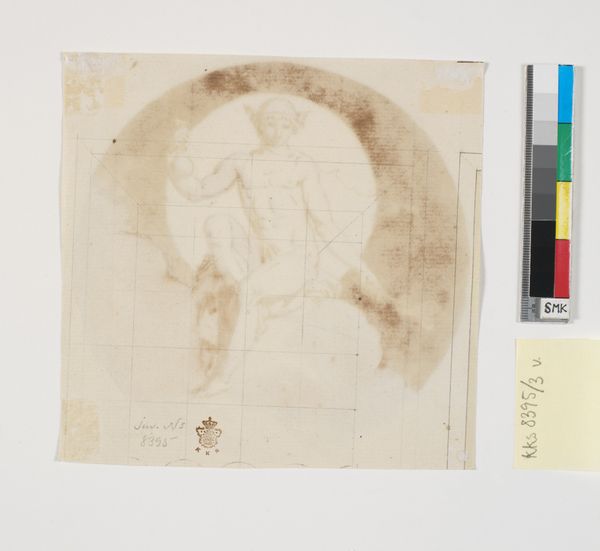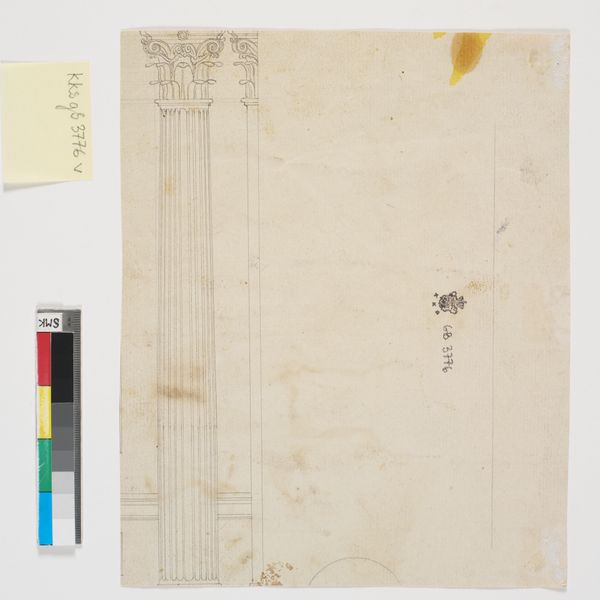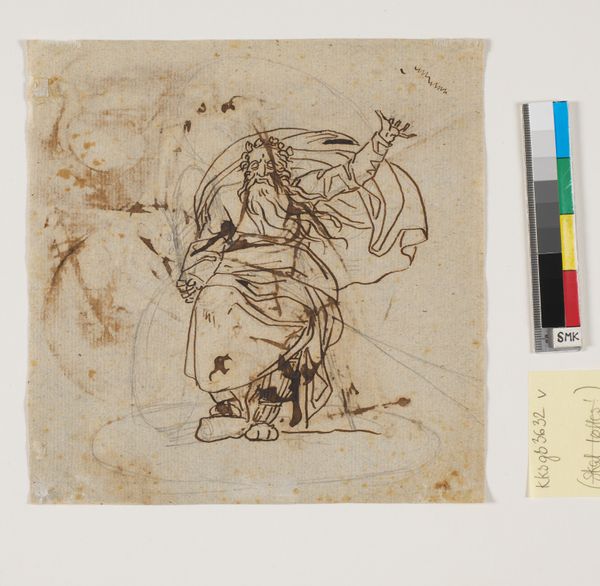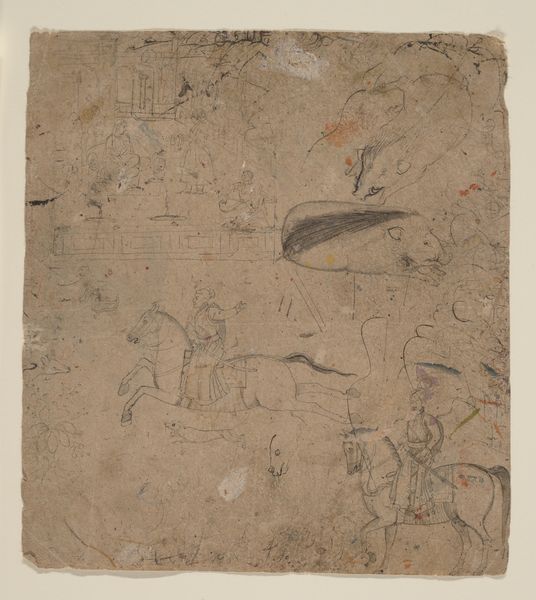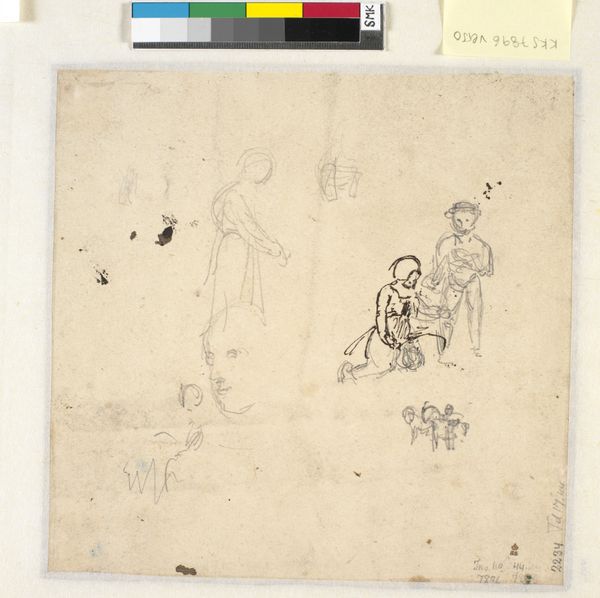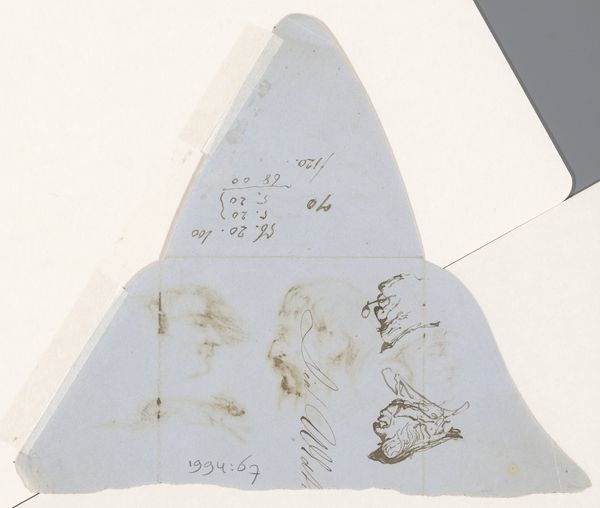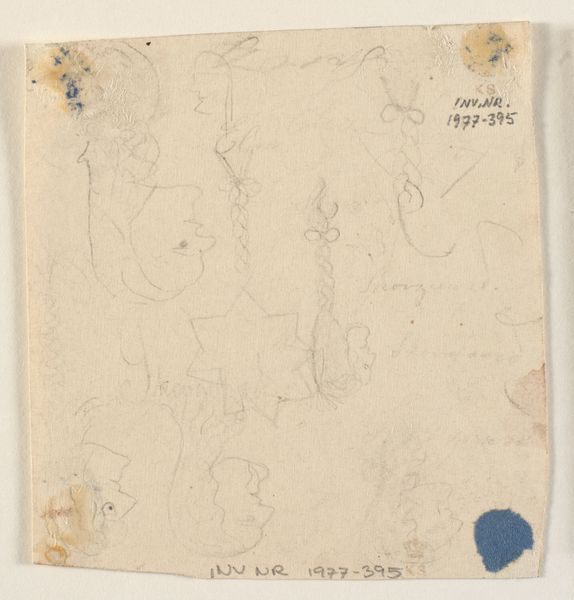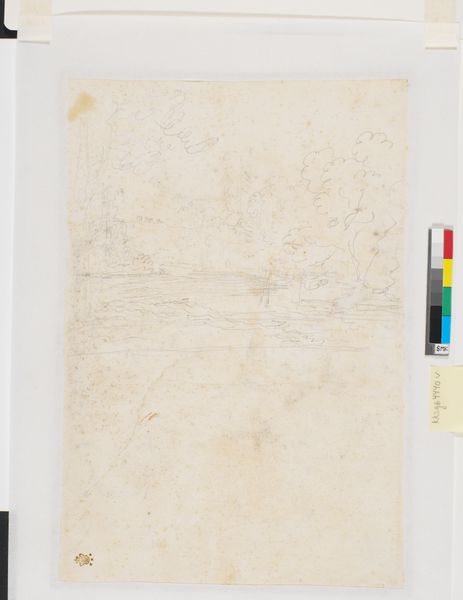
drawing, paper, ink
#
drawing
#
neoclacissism
#
paper
#
ink
#
academic-art
Dimensions: 171 mm (height) x 185 mm (width) (bladmaal)
Editor: This is "Et lille klokkeformet dekorativt udkast" by Nicolai Abildgaard, dating from sometime between 1743 and 1809. It's an ink drawing on paper. I find the sketches scattered across the page intriguing, giving the impression of fleeting ideas captured in moments. What formal elements stand out to you in this piece? Curator: Formally, I observe the dynamism arising from the contrast between the central, meticulously delineated bell-shaped object and the amorphous, seemingly spontaneous surrounding marks. Note the interplay between the definite and the indefinite. The artist uses line weight judiciously, emphasizing certain contours to establish visual hierarchy, which in turn guides the viewer's eye. Editor: The scattered sketches are intriguing, aren't they? Almost like peripheral thoughts around the central subject. Curator: Precisely. Their distribution creates a tension within the picture plane. While the central form adheres to certain neoclassical ideals of clarity and order, the surrounding gestures hint at a more fluid, almost baroque sensibility. Observe how these ancillary marks complicate the composition and resist a purely rational interpretation. Editor: So, it's a visual push and pull between order and spontaneity? I hadn't considered that. Curator: Yes, and the bareness of the paper further enhances this effect, creating a field for the play of these visual elements. The drawing's power resides in its formal juxtapositions and calculated imbalances. Editor: This close look reveals a lot more intention than I initially perceived, even in what I thought was casual. Curator: Indeed. And understanding these formal choices offers a deeper appreciation for Abildgaard's compositional strategy.
Comments
No comments
Be the first to comment and join the conversation on the ultimate creative platform.
